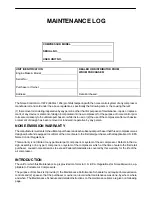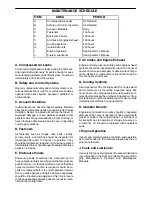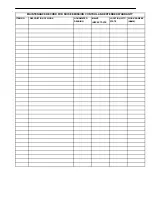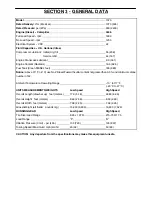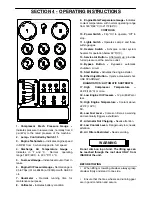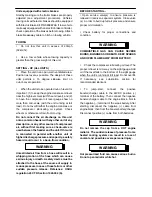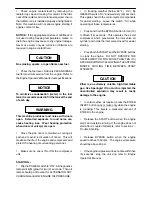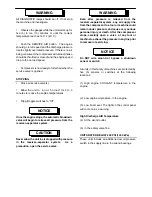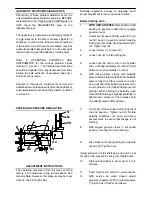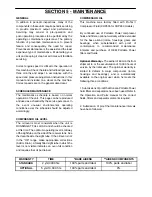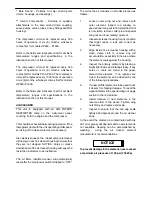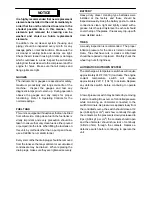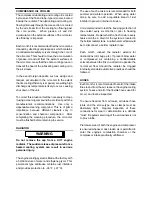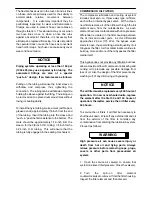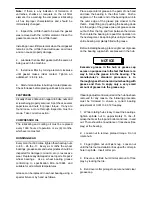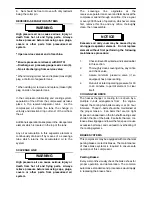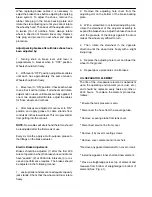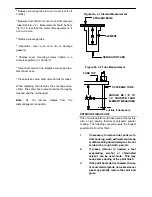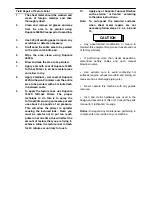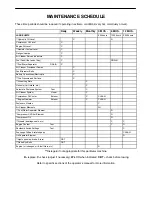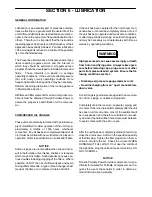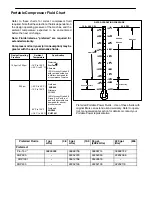
WARNING
All DIAGNOSTIC lamps should be off. If not, stop
the machine and investigate.
•
Observe the gauges while the unit warms up for
five (5) to ten (10) minutes or until the coolant
temperature reaches 140
°
F (60
°
C).
•
Push the SERVICE AIR button. The engine
should go to full speed and the discharge pressure
rise to slightly over rated pressure. If there is no air
being consumed, the compressor will unload (intake
should be throttled or closed) and the engine speed
drop to the no load speed.
•
Compressor is now ready to furnish air when the
service valve is opened.
STOPPING
•
Close air service valve(s).
•
Allow the unit to run at “no load” for 3 to 5
minutes to reduce the engine temperatures
•
Flip all toggle switches to “Off”.
NOTICE
Once the engine stops, the automatic blowdown
valve will begin to relieve all pressure from the
receiver--separator system.
CAUTION
Never allow the unit to sit stopped with pressure
in the receiver--separator system.
As a
precaution, open the service valve.
WARNING
Even after pressure is relieved from the
receiver--separator system, any air supply line
from the compressor to a tool or machine could
remain under pressure and cause very serious
personal injury or death. After the compressor
stops, carefully open a valve at any tool or
machine to exhaust the pressure in any line prior
to removal or servicing.
NOTICE
Do NOT wire around or bypass a shutdown
sensor or switch.
All units in this family of machines are protected by
five (5) sensors or switches at the following
locations:
(1) High engine COOLANT temperature in the
engine.
(2) Low engine oil pressure, in the engine.
(3) Low Fuel Level. The light on the control panel
will come on as a warning.
High Discharge AIR Temperature
(4) At the airend outlet.
(5) In the safety valve Tee.
UNITS RATED BELOW 200 PSI (1400 kPa)
These units include an additional low oil pressure
switch in the supply line to the airend bearings.








